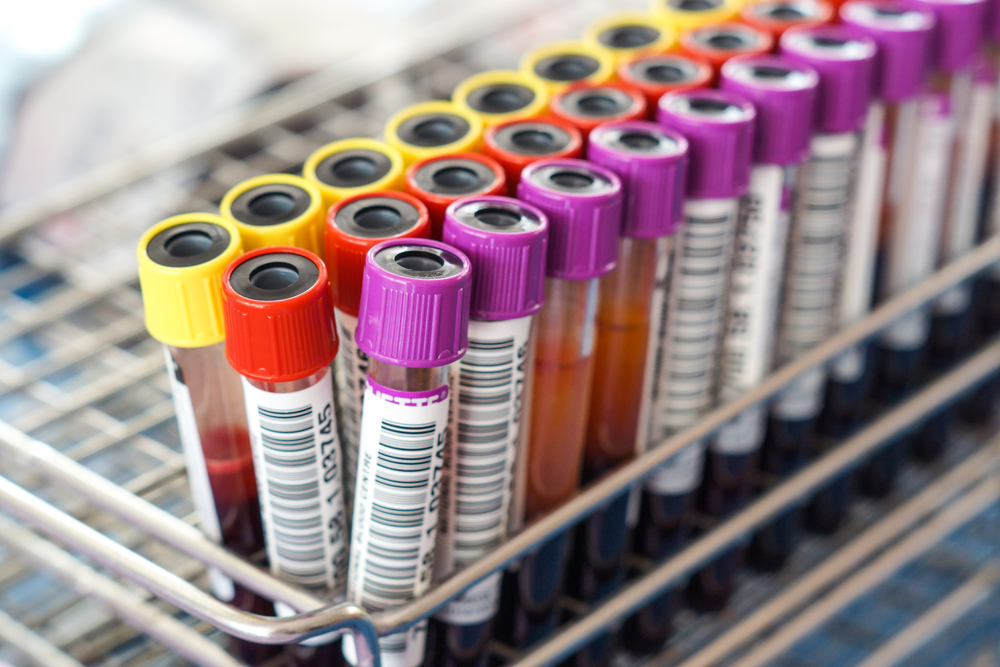YKL-40 May Be Helpful Blood Biomarker of AAV Disease Activity

Levels of the chitinase-3-like 1 (YKL-40) protein in the blood may serve as a helpful biomarker of disease activity in people with ANCA-associated vasculitis (AAV), findings from a new study suggest.
Yet, additional studies are needed to validate the results and elucidate the role of YKL-40 in AAV, the researchers noted.
The study, “Serum chitinase-3-like 1 protein is a useful biomarker to assess disease activity in ANCA-associated vasculitis: an observational study,” was published in the journal Arthritis Research & Therapy.
Measuring disease activity in people with AAV is important not only to select the most appropriate treatment for each patient, but also to predict disease relapse or resistance to treatments. Yet, current scales are complex and vary considerably with different observers, pointing to a need for accurate biomarkers that measure disease activity in these patients.
YKL-40 is a sugar molecule, produced and secreted by various cell types, that has been associated with inflammation and tissue remodeling — the reorganization or renovation of existing tissues in the body. Elevated levels of this protein have been reported in patients with autoimmune diseases and cancer, but its clinical implications in AAV have not been investigated.
Now, researchers at the Yonsei University College of Medicine, in Korea, investigated whether YKL-40 is associated with disease activity in people with AAV.
A total of 60 participants enrolled in the Severance Hospital ANCA-associated Vasculitides (SHAVE) group between November 2016 and June 2018 were included in the analysis.
Among them, 32 had microscopic polyangiitis, 17 had granulomatosis with polyangiitis, and 11 eosinophilic granulomatosis with polyangiitis. Their mean age was 59.4 years, 66.7% were female, and 38.3% had new onset AAV.
Disease activity was measured using the Birmingham Vasculitis Activity Score (BVAS), while the Five Factors Score (FFS) was used as a predictor of prognosis. The Short Form-36 (SF-36) was used as a measure of physical and mental function.
The median BVAS and FFS scores in AAV patients were 7.0 and 1.0, and the mean SF-36 physical and mental scores were 50.5 and 58.3, respectively. Statistical analysis showed that YKL-40 levels were independently associated with BVAS, FFS, and SF-36 scores.
Patients with severe AAV, defined as a BVAS score of 12 or higher, and those with high FFS — scores of 2 or higher — presented significantly higher YKL-40 blood levels than those without severe disease or low FFS scores. Patients with active disease also had greater levels of this protein in the blood than those in remission.
Additional analysis found that YKL-40 blood levels were associated and could be used to estimate more severe disease and worse prognosis. In particular, a measurement of 221.3 nanograms/mL was considered the best cut-off value to distinguish patients with severe AAV, while a value of 227.1 ng/mL was the best to discriminate patients with high and low FFS scores.
The biomarker also was inversely correlated with SF-36 scores, meaning that higher levels of this protein were associated with worse physical and mental function in patients.
Also among AAV patients, YKL-40 blood levels were significantly higher in those with MPA and GPA when compared with EGPA, and in those with kidney involvement compared with other clinical manifestations.
Because YKL-40 levels also are high in other autoimmune conditions, the team compared AAV patients’ levels with those of 30 people with systemic lupus erythematosus, 28 with rheumatoid arthritis, 22 with osteoarthritis, and 40 healthy volunteers.
Results demonstrated that AAV patients had greater amounts of YKL-40 than any of the other groups.
Finally, to investigate if changes in disease activity over time could also be captured with this protein, the researchers measured YKL-40 blood levels in 12 patients with samples collected over three months or more. All but one of these patients (91.7%) experienced a significant reduction in YKL-40 levels after disease improvement.
“This is the first study to evaluate the clinical significance of [blood] YKL-40 levels in patients with AAV and demonstrated that it could reflect disease activity in AAV,” the researchers wrote.
The team noted several limitations to their findings, including the small number of patients and short follow-up period. Also, the optimal YKL-40 detection method remains unclear and its cut-off levels could not be fully validated in an independent group. Finally, the researchers were not able to identify cell types expressing YKL-40 or determine whether YKL-40 has a functional role in AAV.
“Additional studies are warranted to validate our results and provide better insights concerning the role of YKL-40 in AAV,” they concluded.






